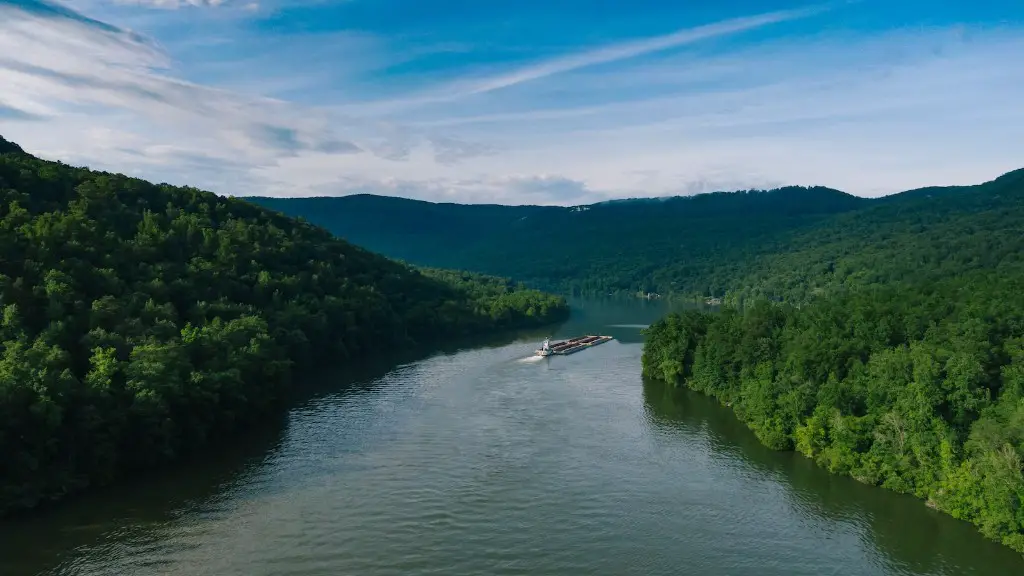The Mississippi River is one of the busiest and most economically important areas in the US, yet it’s heavily polluted. From fertilizer runoff to industrial waste, the river is subject to countless sources of pollution that are impacting communities and habitats. While some forms of pollution are perhaps more noticeable than others, their presence is no less damaging to the health of the Mississippi River.
In recent years, concentrations of phosphorus in the Mississippi River have reached dangerously high levels. An essential nutrient needed for healthy aquatic ecosystems, phosphorus is essential for the river’s health. However, too much of it can lead to excessive algae blooms that pollute the waters. It is estimated that 68% of the phosphorus entering the Mississippi River comes from runoff of farm and urban areas.
Excessive runoff is also responsible for an influx of sediment into the river. Sediment is created by eroded soil and brings a host of problems to the Mississippi River. It can cause low oxygen levels and suffocate aquatic life, cloud the water and deprive some plants of adequate sunlight, and transport pollutants such as nitrogen and phosphorous to elsewhere in the watershed.
Indirectly, the river also bears the burden of air pollution from nearby cities. Acid rain, produced by burning fossil fuels, can fall into the river, disrupting its natural chemistry and affecting the plants and animals that live within it. Moreover, industrial activity in the region can produce toxins that make their way into the Mississippi River from factories and farms. Pollutants such as lead and mercury can build up in fish, leading to serious health problems in those who consume them.
Scientists are beginning to track the sources of pollution in the Mississippi River to better understand their impacts. One of the key takeaways is the need for different sources of funding and laws that are tailored to the specific challenges of the river basin. These could involve reforming infrastructure to minimize runoff and cleaning up surrounding bodies of water in order to minimize contaminants entering the main river.
What’s more, public awareness must also be raised on the dangers of pollution in the river. Too often people underestimate the consequences of their actions and the importance of keeping hazardous substances out of the Mississippi River.
Agricultural Pollution
Another major source of pollution in the Mississippi River is agricultural runoff. Nitrogen, phosphorus, and other nutrients from fertilizer and manure can contaminate the river and its bordering waterways. These pollutants can create algal blooms, which can damage fish and other aquatic life, as well as make recreational activities such as fishing and swimming dangerous.
What’s more, these pollutants can affect humans’ drinking water, as municipal water systems often use the river for their water supplies. Poor environmental conditions caused by agricultural pollution can also lead to health problems such as respiratory illnesses, neurological issues, and skin irritation.
Farmers can take several steps to reduce their contribution of pollutants to the Mississippi River, such as installing riparian buffer strips along the banks and controlling the sources of runoff. Additionally, they can work with Extension agents and local organizations to create nutrient management plans that balance the needs of the local environment with economic production.
Polluted Runoff
Polluted runoff is another major source of pollution in the Mississippi River. This type of pollution occurs when rainwater picks up pollutants from streets, landfills, cars, and other sources, and carries them into nearby bodies of water. These pollutants include oil, pesticides, herbicides, and heavy metals, all of which can have devastating impacts on fish, other wildlife, and humans.
The good news is that there are steps people can take to reduce the amount of pollutants entering the river from polluted runoff. For example, people can reduce the amount of chemicals and oils used around their homes, install stormwater runoff filters, and create vegetated buffer zones around their property. These buffers can help filter pollutants out of the runoff before it reaches the river.
The state and local governments also have a role to play in combating polluted runoff. They can work to improve stormwater management systems by reinforcing infrastructure and improving drainage systems. Additionally, they can create incentives for property owners to reduce their runoff and monitor the quality of rivers and streams.
Industrial Waste
The Mississippi River also suffers from industrial pollution. Companies in the area discharge hazardous materials directly into the river, polluting its waters and putting people and wildlife at risk. These pollutants include heavy metals such as lead, mercury, and arsenic, as well as chemical compounds that can be harmful to humans.
The US Environmental Protection Agency (EPA) has implemented strict regulations to protect the Mississippi River from these pollutants, but they are often not enough. Companies must also be held accountable and work to minimize their contribution of pollutants to the river. This could involve changing production processes, improving wastewater treatment, and investing in cleaner technologies.
In addition, the EPA and other organizations must continue to monitor industrial sites to ensure that companies are not violating their permits or polluting the river. If companies are found to be in violation of the regulations, they should be held accountable and pay financial penalties.
Conclusion
Overall, pollution in the Mississippi River can have devastating impacts on both human and ecological health. From farm runoff to industrial waste, the river is subject to numerous sources of pollution that must be addressed if we hope to restore it to health.
It is thus imperative that governments and citizens work together to reduce pollution and protect the river. Through public awareness campaigns, legal action, and better technologies, we can create a healthier ecosystem and restore the Mississippi River to its former glory.




